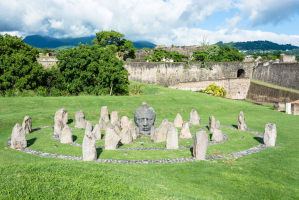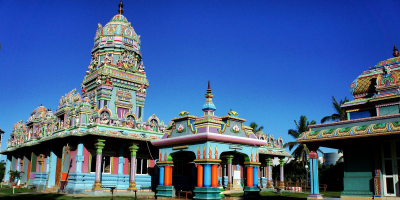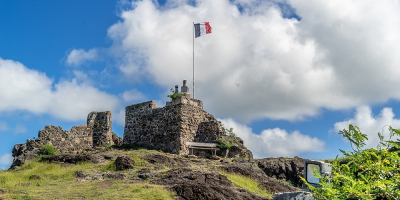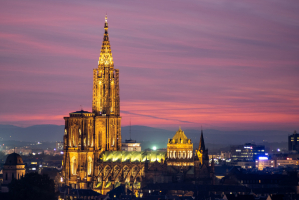Top 7 Most Beautiful Historical Sites in Martinique (France)
Martinique, the island in the Caribbean, is a great alternative if you're looking for a taste of France in the Caribbean. It is also a former French colony in ... read more...the East Caribbean Sea, a former colony with a cultural and physical diversity with unique French and Creole cultural elements interwoven through art, music, cuisine, and language. say of the island. Today, Martinique attracts tourists by its tropical forests, white sand beaches, cultural experiences from Créole cuisine to music and art, especially historical and cultural relics associated with the centuries. the idea of this place went through a complicated and painful historical period until slavery was only abolished on the island in 1848. Toplist would like to introduce readers to the 7 Most Beautiful Historical Sites in Martinique, France when visiting this place.
-
Toplist's top 7 Most Beautiful Historical Sites in Martinique begins with a visit to Fort-de-France, the busy capital city with vivid squares, streets, spice shops, restaurants, and, most notably, the Schoelcher Library.
This library was founded on the initiative of Victor Schœlcher, a well-known abolitionist. He was also a man who devoted his life to fighting slavery with many famous works. He was also a senator of Martinique involved in drafting the annulment decree of 1848. And to demand the construction of a public library in the colony, he donated his private library of over 250 music and 9,000 books to the General Assembly of Martinique in 1883.
The Schoelcher Library, a pioneering building of that period, was designed by architect Henri Picq in 1884. In fact, it is a historical monument that was planned to be built in 1973. Not only that, but it is also successful in combining various building materials such as concrete. Iron and wood are intended to counteract the risk of subsidence of the swampland of the town of Fort-de-France, as well as extreme Martinique weather conditions such as hurricanes and earthquakes. Therefore, the Schoelcher library is the most prominent library in the town of Fort-de-France thanks to the quirky architectural style borrowed from many different schools reminiscent of the colonial period of that time.
The Schoelcher Library serves two major purposes including preserving heritage records relating to Martinique and the Caribbean, and its environment and also transmitting local collective memories. As a result, the Schoelcher library is considered Martinique's reference heritage library. In addition, the library also contributes to the development of reading and cultural activities throughout Martinique. Libraries ensure citizens access to information and train them in the fight against illiteracy.The Schoelcher library contains an exceptionally rich collection of historical heritage. It offers people the opportunity to explore or study all the economic, political, literary, and social aspects of the French and Caribbean revolutions from the 16th century to the present day. Therefore, it is not only a tourist destination but also a place for learning and research, as well as developing encyclopedia collections.
All rare items related to Martinique's history are carefully preserved and kept in the best possible condition such as handwritten letters, typewriter, workbooks, and drafts of works. published, itinerary notes, postcards, plans, photos, prints, tracks, books, geographic maps, past exhibitions, etc. That ensures that visitors will have the most realistic and wonderful experience when they come and experience one of the 7 Most Historical Sites in Martinique.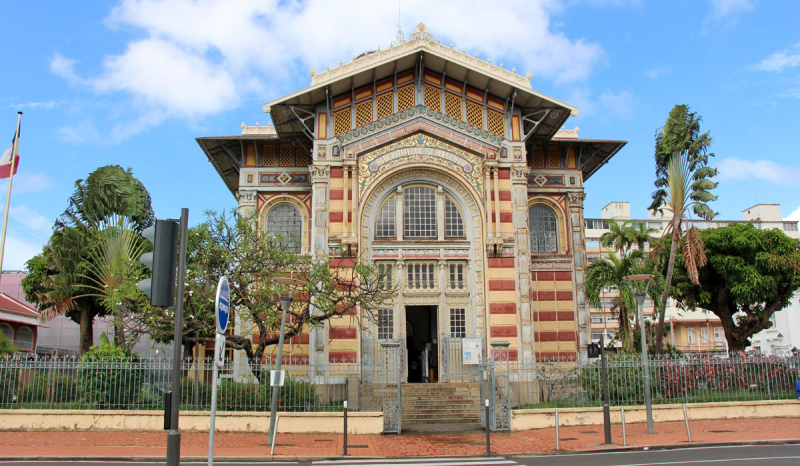
Photo: azmartinique.com The space inside of Schoelcher library - Video: Erick Tseng -
Many Caribbean islands build monuments and works of art to display the period of the African slave trade. A few of them provide serious attraction to visitors here is the Anse Canard Slave Memorial on the banks of Le Diamant in Martinique. In 1815, it was unlawful to import new slaves to the Caribbean, but despite the prohibition, many people continued to do so.
The night of April 18, 1835, a cargo ship transporting forty slaves crashed onto the rocks off Martinique's southeast coast and the crash killed half of the men and women on board. It is sculpted by artist Martinican Laurent Valére including 15 stone statues representing slaves who have fallen victim to the sunken ship, as well as a tribute to slaves who are not properly buried. The fifteen statues represent slaves who have fallen victim to the sunken ship, as well as a tribute to slaves who are not properly buried. Each 8-foot-tall statue bears representations of the aftermath of the terrible accident and the grief of the loss that fateful night.
The Anse Canard Slave Memorial was completed in 1998 on the 150th anniversary of slavery in the French West Indies. When coming here, many visitors coming Anse Canard Slave Memorial will surely be surprised by the beauty of this memorial area that it has no gates, fences, or chains. In addition, visitors are completely free to experience and explore. Visitors will admire the statues overlooking the sea, immersing in the fresh, fresh air of the attached island that has gone through the harsh historical period of slavery. Therefore, Anse Canard Slave Memorial deserves to be one of the 7 Most Beautiful Historical Sites in Martinique.
You can visit the Anse Cafard Slave Memorial at all hours of the day, as well as any day of the week. One piece of advice for those who are planning to visit this place is that since the monument is located near Diamond Beach, you can definitely stop here on the way or from the beach to save money on a taxi.
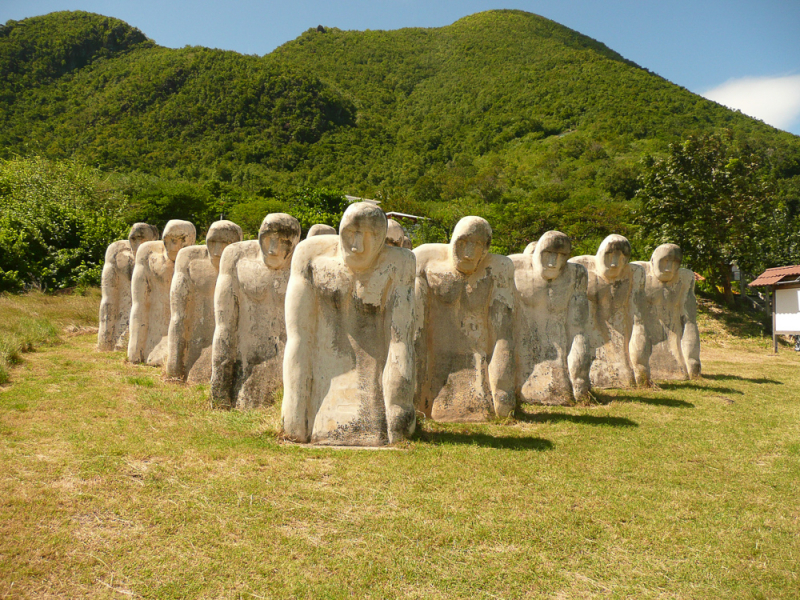
Photo: afar.com 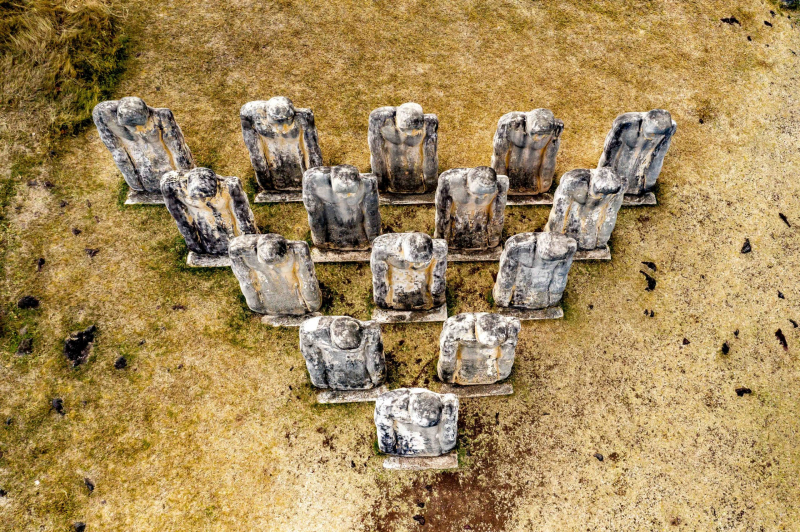
Photo: uncommoncaribbean.com -
Just a 10-minute walk into the woods outside Le Marin, An Mao, a peaceful memorial to Martinique's fleeing slaves. In this one-hectare park, visitors are diving on an intense memorial trip inhabited by Indian slaves, followed by elders who, after slavery was abolished.
An Mao Héritage is a monument created by Pierre-Yves Panor on the chestnut land of "An Mao", It is here that many survivors have escaped from nearby plantations, following their ancestors. after slavery in the French Caribbean was abolished in 1794. An Mao Héritage is also the land of their ancestors leaving the plantation after the abolition of slavery to build a new destiny for the people here.
This place is a grateful place to pay tribute to them for the cultural and human heritage they have left behind: the ideals of peace, faith, freedom, brotherhood, stories, legends. and above all, love of nature and plant science. Besides, An Mao Héritage manifests their ancestral wisdom through its gardens and attractions, as well as knowing the importance that trees, plants, stories and beliefs have in Martinique's social history.To enter An Mao Héritage, visitors need to park their car next to the "We are humanity" sign at the entrance. After that, take about 10 minutes to enjoy walking, immerse yourself in nature to enjoy the magical panorama of this place! An Mao Héritage is open Monday, Wednesday, Friday and Sunday afternoons from 3:30 pm and Saturday from 9:00 am. It is truly a must-visit for those who want to learn about authentic Martinique, the cradle of history and culture.
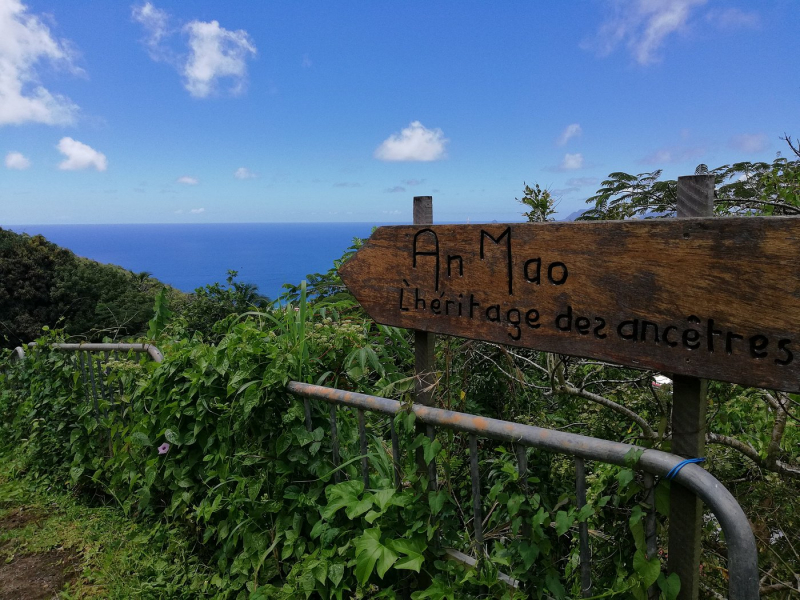
Photo: tripadvisor.fr Video: Matinik Photos Restos Activités -
Habitation Clément is considered as a font of Creole history by owning a rum distillery, plantations, and heritage.
Originally, the site was a prestigious sugarcane plantation but was sold in 1887 by the mayor Homère Clément of Le François. He is also descended from a freed black slave. He eventually turned the plantation into one of the Caribbean's most famous rum distilleries, pioneering the creation of Rhum Agricole (a rum made with fresh cane juice rather than molasses).
Habitation Clément is a 160-hectare agricultural area located in the commune of François in Martinique's southern region. This location, dominated by an 18th-century Creole mansion, rallies in the center of sugarcane farms, a vast heritage, an arts hub, acknowledged modern, and a famous rum house, and was designated as a historical monument in 1996. Nearly 100,000 people come each year to experience this unique location, which has managed to retain agricultural and industrial functions while introducing the botanical, rum, Creole, and industrial worlds, as well as teaching instruments to aid students in their exploration. In 2011, Habitation Clément was recognized as a "Famous House" in Martinique, France, and deserved to be on the list of the 7 Most Beautiful Historical Sites in Martinique.
Nowadays, visitors can experience Martinique's past and present at the 43-acre site near Le François. We begin the tour at the main house, where we can see traditional Creole architecture and furniture before exploring the annexed buildings, including the kitchen, the cashier's cabin, stables, and carriage sheds. Then take a stroll through botanical gardens, which span the former distillery's industrial wasteland and are home to more than 300 tropical plant varieties. Visitors arrive at the distillery, where we can learn about the production process, try some of Clément's well-known wines, and select our own bottles to take home. Remember to check out the galleries before we leave; they are housed in a few renovated structures and display the work of local artists.
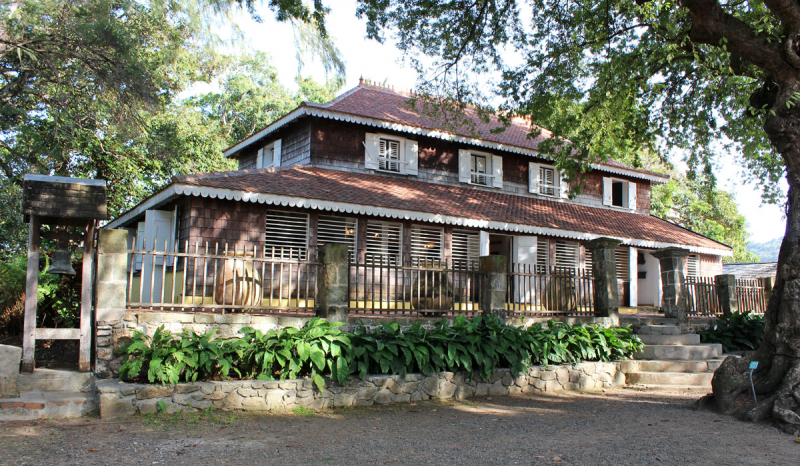
Photo: azmartinique.com Video: Fondation Clément -
Visit the ruins of Château Dubuc in the woods east of Martinique to get a glimpse of Martinique's colonial history. Château Dubuc is the name given to an old farm house located in Tartane (commune La Trinité), on the Caravelle peninsula, in Martinique. This house has an aura of mystery and becomes an interesting example of Martinique's study of history in the eighteenth century. The ruins of this site are located almost at the end of the peninsula and are a haunting sight dating back to the 17th century.
Château Dubuc was built in 1725 by Louis du Buc du Galion, grandson of colonial Pierre du Buc. It was thought that du Bucs smuggled goods and trafficked slaves, so he had such a huge fortune including large warehouses and dungeons. Not only that, but folk also say that the owner of the estate used a lantern to lure the ship to sink offshore and then collect his own spoils.
The name "Château" comes from the height of this construction, in which only a few stone slabs are left to delineate the walls of a large castle. Housed in "a simple house like many other sugar mills in the 18th century", the house was built according to "classical planning of the French 18th century, with the stairs integrated into the main building". The walls are tied together with rocks and rubble of basalt and coral. Besides, from the lime kilns between the rubble and the joints between the stones, archaeologists have shown that lime is also used in this area.
The home used to be in the middle of sugar, coffee, and tobacco plantations, but nowadays, these slave houses have completely disappeared, leaving only buildings dedicated to the exploitation of sugar and coffee. Ruins of Château Dubuc which have long been considered a dungeon for slaves now houses a small museum that educates tourists about the area's history and inhabitants. It is also a great place to take a stroll with sweeping sea views, as it is surrounded by the Martinique Regional Nature Park.
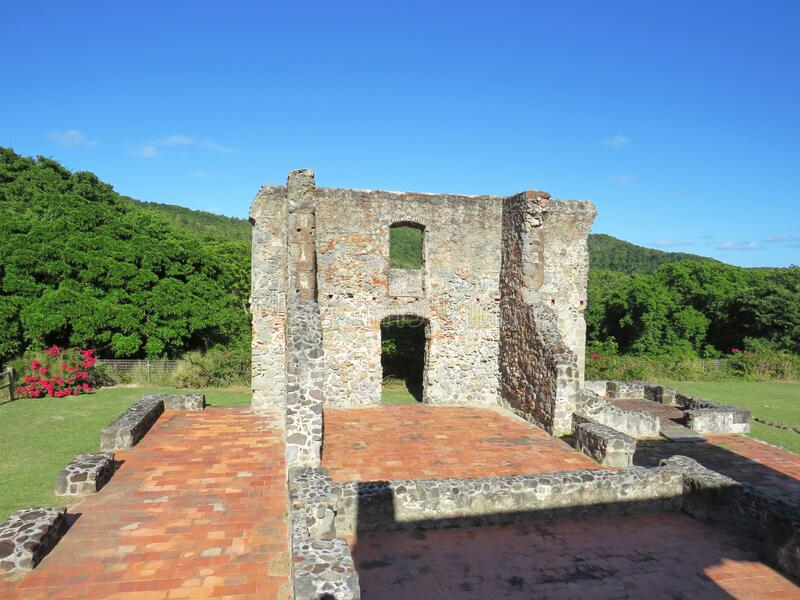
Photo: destimap.com VIdeo: Discover The World -
Théâtre Aimé Césaire is located in the ancient town hall in the center of Fort-de-France in a commercial district in the center of the capital, just steps from the enormous covered market and the Schoelcher library, the region of the French Caribbean and named for the late Martinican Aimé Césaire, a poet, playwright, and politician who was greatly admired in Martinique and across the world. Césaire is most known for his contributions to French writing from the perspective of the African people, including the one-book poetry Cahier d'un Retour au Pays Natal (1939) and the drama Un Tempête (1969).
This structure of the City Hall Fort de France was constructed over a period of 17 years, from 1884 to 1901, an elegant building in neoclassical style contains an Italian-style theater, and Théâtre Aimé Césaire is the classical style that sets it apart from the rest of the city that has been designated as a historical monument.
A theater with an 800-seat capacity was constructed for the main structure in 1912. This is where Aimé Césaire's office was housed during his 56-year tenure as mayor of the West Indian capital (from 1945 to 2001). He maintained it there even when a larger new Town Hall was erected nearby in 1970. In 2009, the building was renamed Théâtre Aimé Césaire, which hosts exhibitions and shows throughout the year.
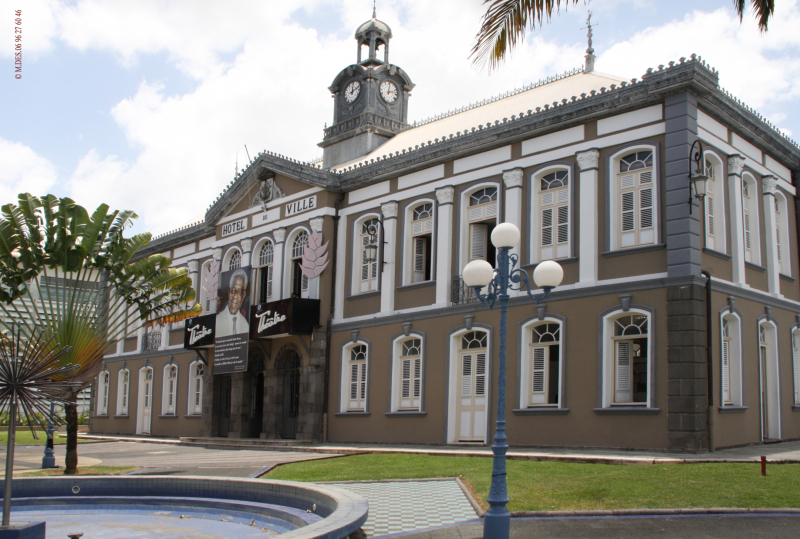
Photo: accueil-martinique.fr 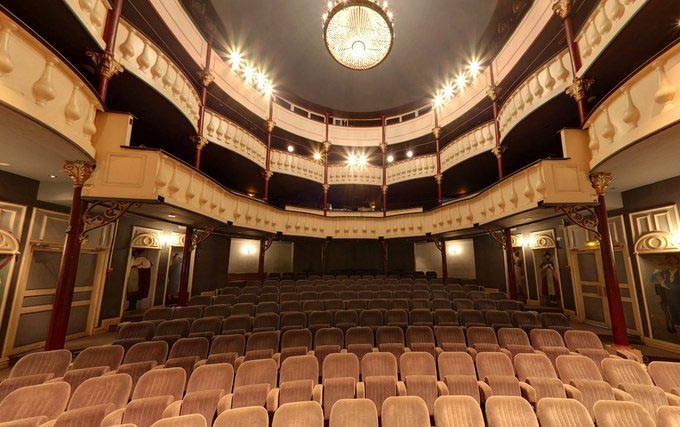
The space inside - Photo: madinin-art.net -
Mount Pelée, whose name follows a French term meaning "Bald", an active volcano on the Caribbean island of Martinique is located 15 miles (24 km) northwest of Fort-de-France.
Its volcanic cone is made up of layers of hardened ash and solidified lava that are layered and reaches a height of 4,583 feet (1,397 meters). Its gently slanted cones have ravines and sustain overgrown woods.
This Mount Pelée volcano had small eruptions that occurred in 1792 and 1851. One of the most terrible eruptions was on May 8, 1902, it violently destroyed the port of Saint-Pierre, killing over 30,000 people, 15% of the island's population in a period of minutes, and is considered the worst volcanic disaster of the 20th century. The event was so dramatic that the scientists used the name of the mountain to describe the peculiar eruption of ash, gas, and deadly fiery clouds. In 1929, a small eruption also occurred but did not cause much damage to the people or the surrounding environment, and its most recent eruption was in 1932.
Pelée is currently silent, and Martinique's seismic and volcanic observatory is carefully monitored daily. So visitors visiting this volcano are completely assured of safety. It has several breathtaking hiking trails with breathtaking views for nature enthusiasts. Visitors to the region must climb the mountain, and there are various paths of varying complexity. For example, the most widely used path begins in L'Aileronthe, the path beginning at Grande Savane, the path beginning at Beauséjour, and the path beginning at Désiles.
Whichever method we choose, a fine morning to climb the volcanic slopes is always the best option, and of course do not forget to bring water, a hat, raincoat, and a jacket. Although Mount Pelée is often cloud-covered, blocking views in the area, on clear days it offers stunning views of Martinique and the sea. That's why it is great that visitors have the opportunity to see the vast landscape and fresh air when coming to one of the 7 Most Beautiful Historical Sites in Martinique.
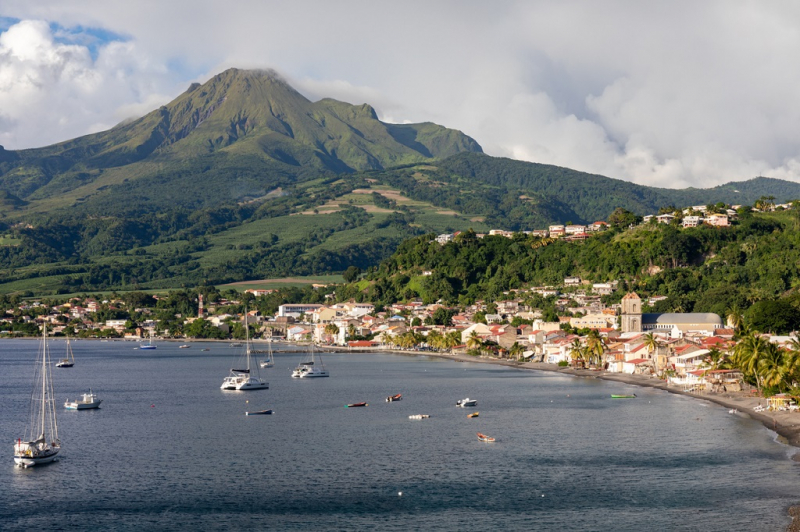
Photo: caribbean.loopnews.com Video: Assemblée Martinique TV









